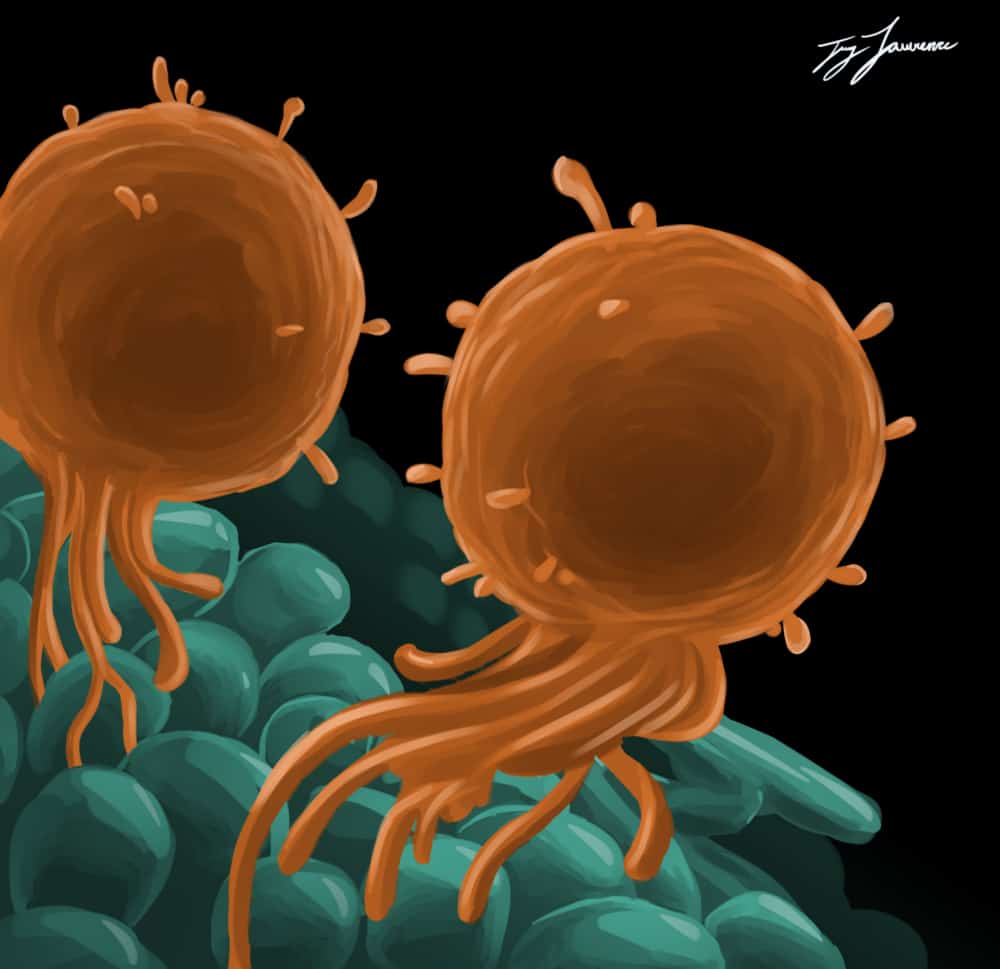A recent study published in Nature Genetics sought to determine the effects of hypoxia — low levels of molecular oxygen — on the development of cancer, including how it may speed up cancer growth. Lead author Vinayak Bhandari, a PhD candidate in U of T’s Faculty of Medicine and the Ontario Institute for Cancer Research, examined hypoxia in over 8,000 tumors across 19 tumour types.
Hypoxia can have detrimental health effects, one of which is that it can cause cancer cells to proliferate.
According to Bhandari, normally, blood vessels in our bodies are well-organized and able to transport nutrients, including oxygen, to all cells. This changes in tumours.
“In tumours, the blood vessels are often very disorganized and have sluggish blood flow,” wrote Bhandari in an email to The Varsity. This leads to low-oxygen tumours. “Around half of all solid tumours end up with low levels of oxygen.”
Hypoxic conditions can accelerate the spread of aggressive cancer cells. In tumours, cancer cells exist with different sets of mutations. Some cancer cells will be susceptible to hypoxic environments due to their specific mutation, and these cells often do not survive.
“But other cells that have a specific mutation may not be affected by low oxygen,” wrote Bhandari. “So you end up enriching the tumour for cells with that aggressive mutation that can survive an extreme environment and you get a more aggressive cancer.”
Despite the threat that hypoxia poses, it has previously been a challenge to study its effects due to the invasive and difficult process of measuring oxygen levels in tumours.
To remedy this, Bhandari and his team created an innovative method for examining tumour hypoxia in more detail.
“We used several mRNA signatures to computationally quantify tumour oxygen levels with existing patient data. We then used this hypoxia information and looked broadly at lots of different genomic features of tumours and found some really interesting links in several cancers,” wrote Bhandari. “We then dug deeper into prostate cancer where we have really good long term data for how patients respond to treatments and we looked further into interactions between hypoxia, changes in the DNA and also how tumours change over time.”
Dr. Paul Boutros — former Associate Professor at U of T’s Department of Medical Biophysics, now at the University of California, Los Angeles, and the supervisor for this study — added that hypoxia and its relevance to cancer growth is still not well understood, but that this research is a significant step.
“I think other researchers are going to be able to take advantage of these data to explore a lot of new angles,” wrote Boutros.
Boutros believes that other researchers will begin to look at genomics associated with hypoxic cancer cells, and begin to look more into genomic data in a new light. Boutros also adds that this research highlights how hypoxic environments arise due to different factors aside from genetic mutations, including cell morphology and evolutionary properties.
Bhandari emphasized the multidisciplinary nature of the team involved in the research, and how it was an asset.
“We were only able to do this because we had biologists, chemists, data scientists, statisticians, engineers, pathologists and radiation oncologists come together to work on this problem in asymmetric fashion. Everyone contributed in important ways over many years and I think this is the best way forward for answering difficult questions.”


